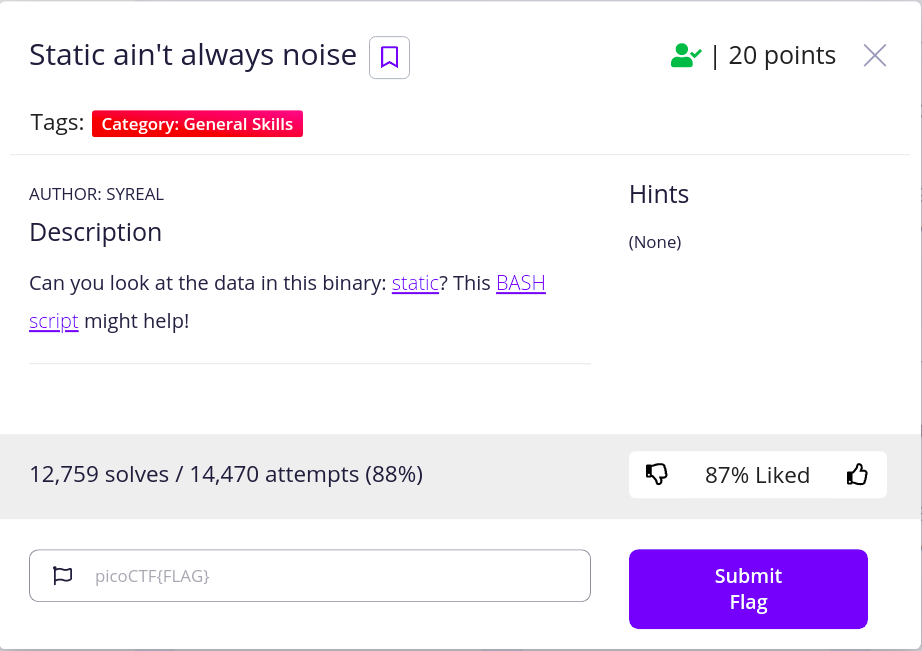引言
昨天學習到的工具是 nc netcat ,可以想成網路版本的 cat ,
但可以雙向溝通,最簡單的使用格式是:
nc destination port
General Skills / Static ain't always noise
題目給了一個執行檔 static 與 shell script ltdis.sh ,
將他們載下來後,因為題目要求看 static 中的資料,
因此直接給權限後執行:
$ chmod +x ./static
$ ./static
執行後:
Oh hai! Wait what? A flag? Yes, it's around here somewhere!
沒有 flag ,題目有說另一個 shell script 會有幫助,
先執行該 shell script 看看:
$ chmod +x ./ltdis.sh
$ ./ltdis.sh
執行後:
Attempting disassembly of ...
objdump: 'a.out': No such file
objdump: section '.text' mentioned in a -j option, but not found in any input file
Disassembly failed!
Usage: ltdis.sh <program-file>
Bye!
這邊可以看出它將對執行檔進行反組譯,disassembly 就是反組譯的意思,會將執行檔的二進位檔案內容,
轉換成對應組合語言,藉此可以間接觀察執行檔的行為,
但一般來說都不好直接觀察,只能找找蛛絲馬跡。
程式輸出表示需要一個程式輸入,
所以我們把 static 當作參數輸入 shell script:
$ ./ltdis.sh ./static
執行後:
Attempting disassembly of ./static ...
Disassembly successful! Available at: ./static.ltdis.x86_64.txt
Ripping strings from binary with file offsets...
Any strings found in ./static have been written to ./static.ltdis.strings.txt with file offset
然後就可以看到產生了兩個檔案:./static.ltdis.x86_64.txt 與 ./static.ltdis.strings.txt ,
根據程式輸出訊息,任何找到的字串都在 ./static.ltdis.strings.txt 中,
我們用 grep 命令來找出 flag :
$ grep 'picoCTF' ./static.ltdis.strings.txt
輸出:
1020 picoCTF{d15a5m_t34s3r_f5aeda17}
當然這個 flag 每個人不同,之後不會再贅述。
